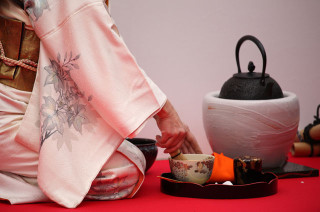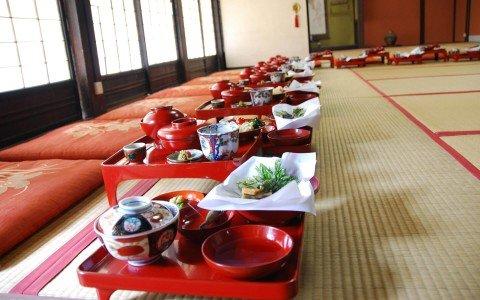Of all the art forms that Japan adopted from China, chanoyu, or tea ceremony, had the most profound influence, perhaps because “the way of the tea” so well suited the way of the Japanese. “Minimalism, balance and composure,” the three essentials in chanoyu, were fundamental to life.
Chanoyu: Nothing Left to Chance
In a Japanese tea ceremony, nothing is left to chance—the simple atmosphere is a result of careful calculations. The plain, straw-mat room is sparsely decorated with a seasonal scroll or flower arrangement, and tea is served in precious yet unpretentious ceramic bowls. A kimono is chosen for its design, perhaps a cherry blossom scene for spring, or autumn leaves for fall. Each design reflects simplicity and natural beauty.

In the 14th century, chanoyu was a luxurious pastime exclusively enjoyed by the aristocracy. It was not until the 17th and 18th centuries that the Japanese tea ceremony was brought to the masses, thanks to the merchant class who strove to emulate the elite. Merchant homes had a formal tea room, always four-and-a-half tatami in size, just like the 15th-century tea room used by Shogu Ashikaga Yoshimasa at his Kyoto villa, Ginkakugi the Silver Pavilion. From the room, chaniwa or tea garden, with ferns, mosses, shrubs, bamboo fences and stone lanterns are carefully tended to for guests to enjoy in quiet contemplation.

